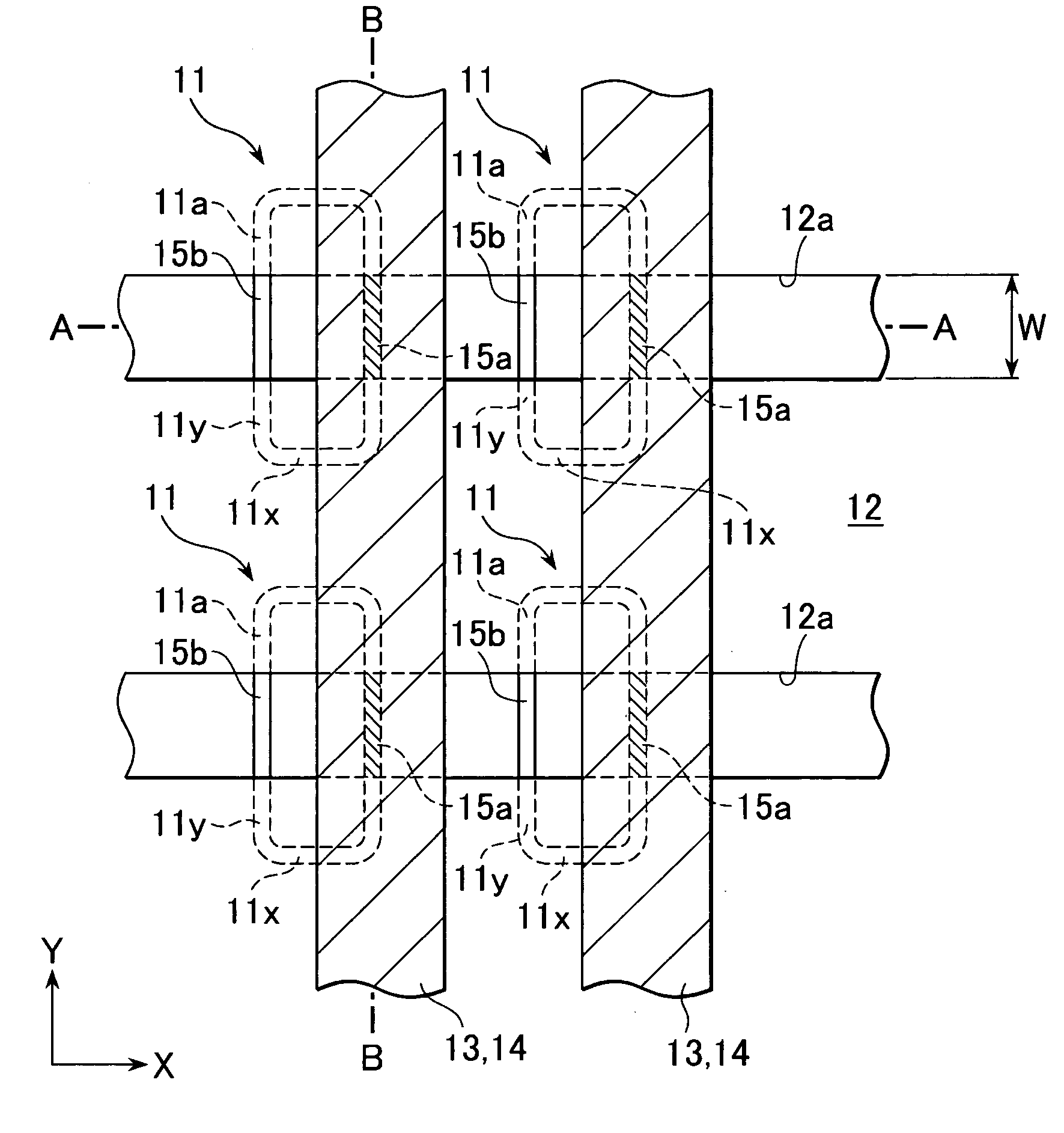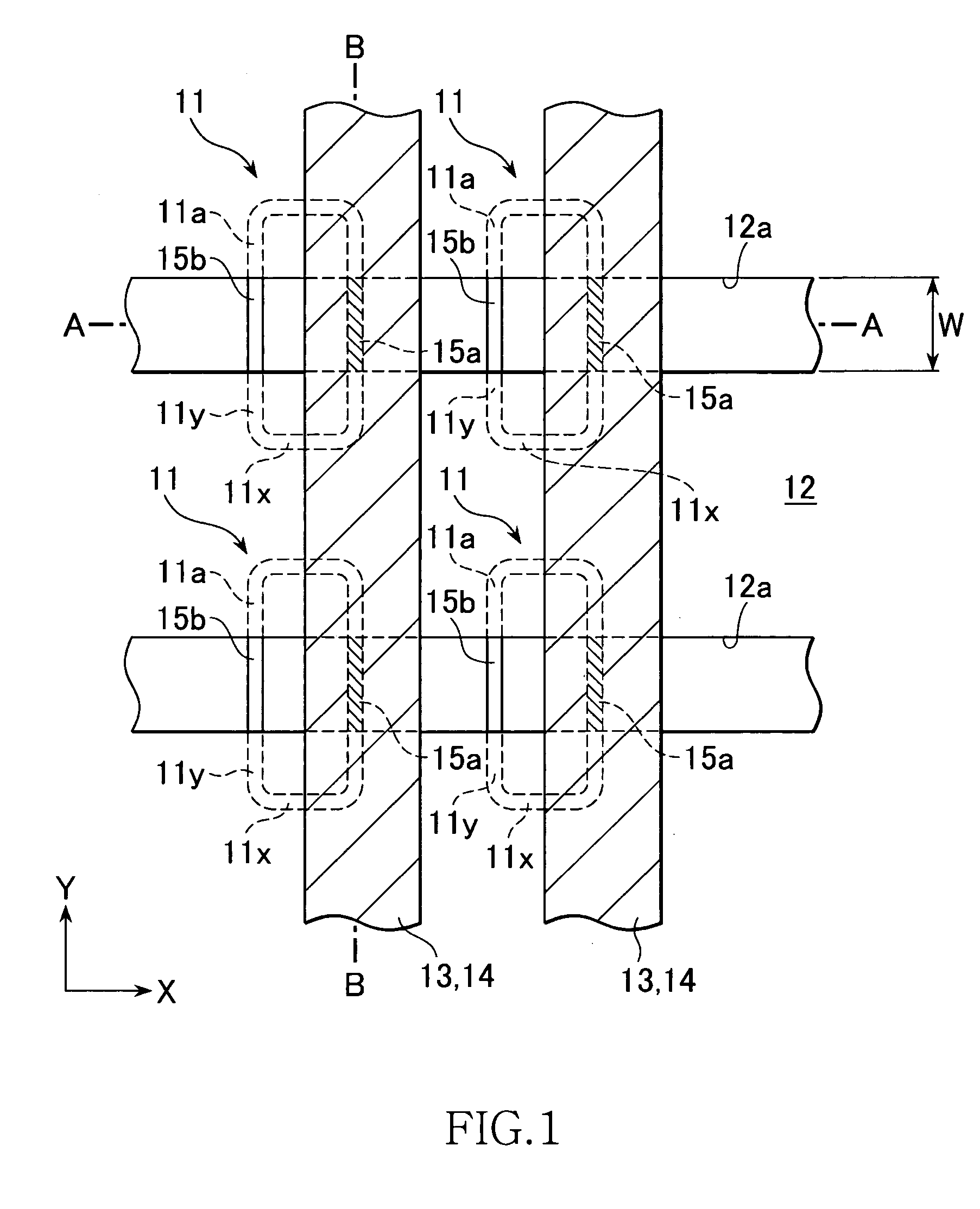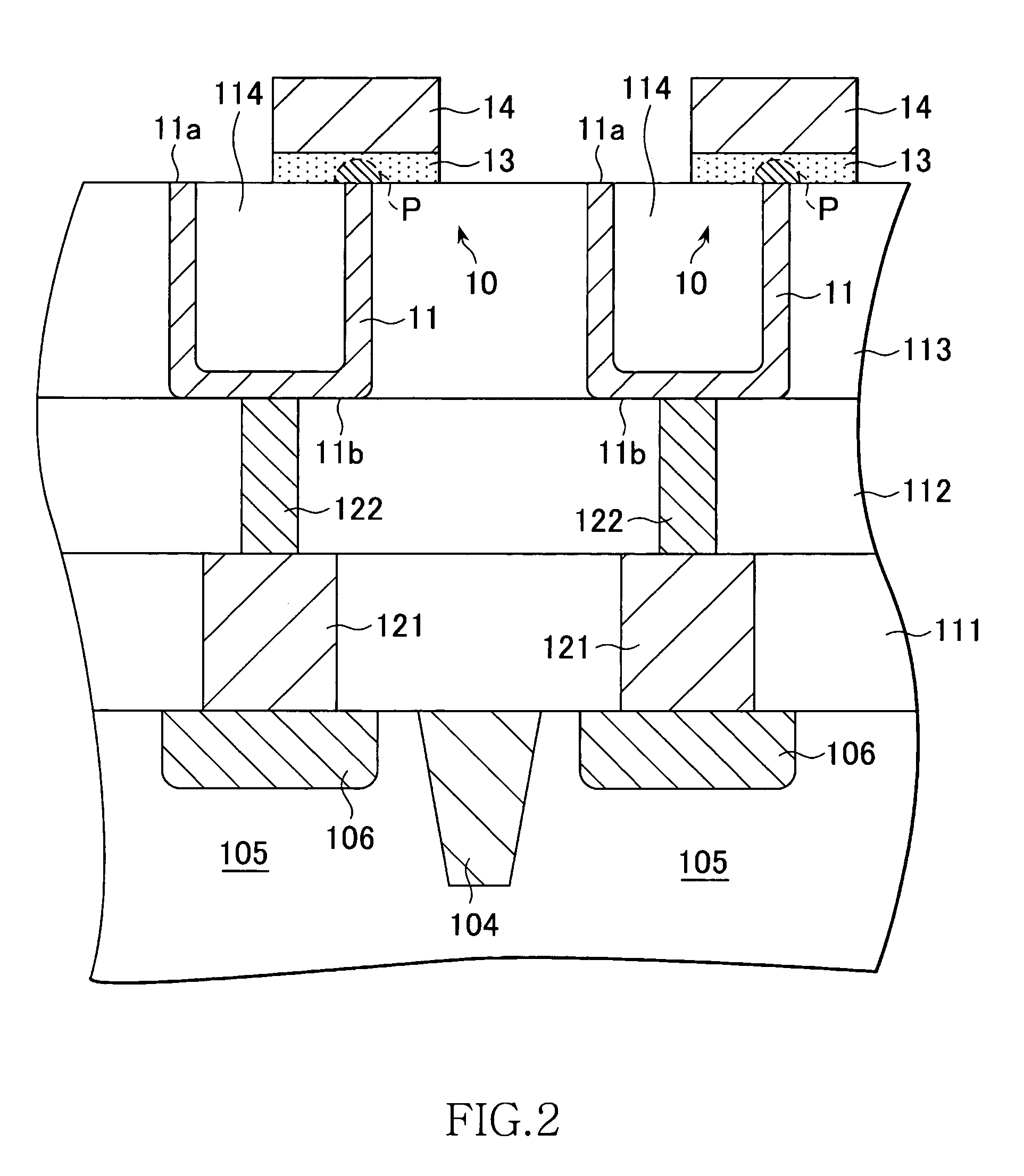Electrically rewritable non-volatile memory element
a non-volatile, memory element technology, applied in the direction of electrical equipment, semiconductor devices, semiconductor/solid-state device details, etc., can solve the problems of reducing the electrical power consumption of the device, dram is volatile memory that loses stored data, and the limit of the device electrical power consumption can be exceeded, so as to prevent the occurrence of poor connection and reduce the write current. , the effect of high heating efficiency
- Summary
- Abstract
- Description
- Claims
- Application Information
AI Technical Summary
Benefits of technology
Problems solved by technology
Method used
Image
Examples
second embodiment
[0092]FIG. 10 is a schematic plan view of the structure of relevant parts of a non-volatile semiconductor memory device according to the present invention.
[0093]As shown in FIG. 10, in the non-volatile semiconductor memory device according to this embodiment, the formation position of the aperture 12a is deviated in the Y direction as compared to the non-volatile semiconductor memory device shown in FIG. 1. Owing to this deviation, each lower electrode 11 exposes the top surface 11a thereof in the entire strip region 11x on one side and in a strip region 11y in the vicinity thereof. That is, in the first embodiment, the aperture 12a is formed at a position where two regions of the top surface 11a of the lower electrode 11 are exposed. On the other hand, in the second embodiment, the aperture 12a is formed at a position where only one region of the top surface 11a of the lower electrode 11 is exposed.
first embodiment
[0094]The formation position of the recording layer 13, however, is set on the strip regionally on one side (right side in FIG. 1), out of the two strip regions 11y of the lower electrode 11, similarly to the Thus, the recording layer 13 contacts only one portion out of exposed regions of the lower electrode 11. That is, the region 15a where the lower electrode 11 and the recording layer 13 contact is further limited to one portion of the top surface 11a of the lower electrode 11 exposed in the aperture 12a.
[0095]With this configuration, in the second embodiment, when the formation position of the aperture 12a in the Y direction or the formation position of the recording layer 13 in the X direction is controlled, it becomes possible to adjust the area of the region 15a. Accordingly, when the formation position of the aperture 12a in the Y direction and the formation position of the recording layer 13 in the X direction are adjusted with high accuracy, it becomes possible to make s...
PUM
 Login to View More
Login to View More Abstract
Description
Claims
Application Information
 Login to View More
Login to View More - R&D
- Intellectual Property
- Life Sciences
- Materials
- Tech Scout
- Unparalleled Data Quality
- Higher Quality Content
- 60% Fewer Hallucinations
Browse by: Latest US Patents, China's latest patents, Technical Efficacy Thesaurus, Application Domain, Technology Topic, Popular Technical Reports.
© 2025 PatSnap. All rights reserved.Legal|Privacy policy|Modern Slavery Act Transparency Statement|Sitemap|About US| Contact US: help@patsnap.com



